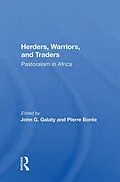African pastoralists have been devastated by drought, famine and dislocation, yet herding remains the most viable system of support for the inhabitants of the vast arid and semi-arid zones. Using case studies of the Tswana and the San, the interlacustrine pastoralists, the Masai and Mursi of East Africa, and the multi-ethnic regional systems of Lak
Autorentext
John G Galaty
Inhalt
Preface -- Introduction -- Introduction -- Cattle and Culture: Domestic Animals as Value and Sign -- "How Beasts Lost Their Legs": Cattle in Tswana Economy and Society -- "To Increase Cows, God Created the King": The Function of Cattle in Intralacustrine Societies1 -- Exchange, Ecology and the "Common Economy" -- Political Ecology in the Upper Nile: The Twentieth Century Expansion of the Pastoral "Common Economy" -- Feasts, Famines and Friends: Nineteenth Century Exchange and Ethnicity in the Eastern Lake Turkana Region1 -- Warfare, Expansion and Pastoral Ethnicity -- Movement, Warfare and Ethnicity in the Lower Omo Valley -- Pastoral Orbits and Deadly Jousts: Factors in the Maasai Expansion -- Herders, Traders and Clerics: The Impact of Trade, Religion and Warfare on the Evolution of Moorish Society -- Hierarchy and Inequality in Regional Systems -- Herders, Hunters and Smiths: Mobile Populations in the History of Kanem -- Pastoro-Foragers to "Bushmen": Transformations in Kalahari Relations of Property, Production and Labor -- Conclusion -- The Current Realities of African Pastoralists
